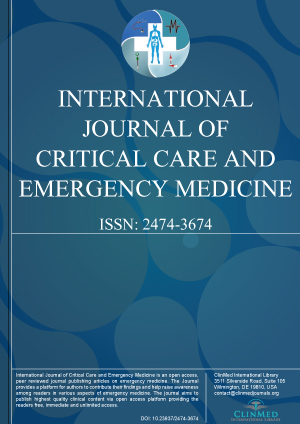Archive
Open Access DOI:10.23937/2474-3674/1510036
Ventricular Tachycardias in Structurally Normal Hearts - A Case Report and Review of the Literature
Juergen Schiefermueller
Article Type: Case Report | First Published: June 21, 2018
Article Formats
- Full Article
- XML
- EPub Reader
Open Access DOI:10.23937/2474-3674/1510035
Jaspreet Singh, Shankar K Thampi, Amit Alam, Rajiv Jauhar, Apoor Patel, and Avneet Singh
Article Type: Case Report | First Published: June 15, 2018
Article Formats
- Full Article
- XML
- EPub Reader
Open Access DOI:10.23937/2474-3674/1510034
Noise Pollution in the Pediatric Intensive Care Unit and its Effect on Sedation
Bree Kramer and Christopher Heard
Article Type: Research Article | First Published: June 14, 2018
Article Formats
- Full Article
- XML
- EPub Reader
Open Access DOI:10.23937/2474-3674/1510033
Teresa A Hand and Debkumar Chowdhury
Article Type: Case Report | First Published: June 06, 2018
Article Formats
- Full Article
- XML
- EPub Reader
Open Access DOI:10.23937/2474-3674/1510032
Jean-Michel Liet, Alexis Chenouard, Sebastien Faraj, Armelle Garenne and Pierre Bourgoin
Article Type: Case Report | First Published: June 06, 2018
Article Formats
- Full Article
- XML
- EPub Reader
Open Access DOI:10.23937/2474-3674/1510031
Jose Luis Vazquez Martinez, Aida Lopez de Pedro, Ana Coca Perez, Raul Montero Yeboles and Cesar Perez-Caballero Macarron
Article Type: Case Report | First Published: January 31, 2018
Article Formats
- Full Article
- XML
- EPub Reader

Volume 4
Issue 1
Issue 1
